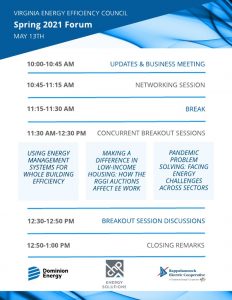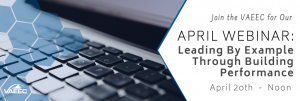 The VAEEC recently hosted a webinar on building performance primarily for local governments across the Commonwealth. Leading By Example Through Building Performance followed three different building performance policies and programs to not only encourage the audience to implement their own strong green building policy but to also provide best practices and lessons learned from the design phase all through the day-to-day management of a program.
The VAEEC recently hosted a webinar on building performance primarily for local governments across the Commonwealth. Leading By Example Through Building Performance followed three different building performance policies and programs to not only encourage the audience to implement their own strong green building policy but to also provide best practices and lessons learned from the design phase all through the day-to-day management of a program.
Speakers included:
- Dawn Oleksy, Climate Action Programs & Operations Supervisor, City of Richmond
- Bill Eger, Energy Manager, City of Alexandria
- Holly Savoia, Director of Sustainability Enforcement, NYC Department of Buildings, and
- Elizabeth Beardsley, Senior Policy Counsel, U.S. Green Building Council.
With Virginia being a Dillon Rule state, localities are limited as to what they can and cannot mandate. However, jurisdictions are finding ways to make progress happen in their communities.
The webinar began with an overview of green buildings and the benefits of a strong green building policy – such as energy savings, emission reductions, and improved air quality – from Liz. Next, Dawn covered the City of Richmond’s climate action policy, RVAgreen 2050, which the City is currently in the middle of developing. RVAgreen 2050 centers around three key points: equity, climate action, and climate resilience. Buildings & Energy is one of five pathways the City is using to meet its goal of achieving net-zero emissions by 2050 and becoming more climate-resilient. This includes requiring an equitable building performance policy for existing commercial buildings, retro-commissioning for existing commercial buildings to improve efficiency, and benchmarking existing commercial buildings.
RVAgreen 2050 is equitable climate action for a healthy and resilient Richmond.
Dawn specified the need for stakeholder engagement throughout the entire process in order to better understand the community’s priorities. She also shared RVAgreen 2050’s measuring process to track the plan’s outcomes and the shared accountability framework to encourage transparency, a culture of improvement, trusting relationships, institutionalizing sustainability in city government, and regular evaluation.
Richmond just began the next phase of community-wide engagement to gather feedback on the plan. RVAgreen 2050 is scheduled to be finalized this summer and adopted by fall.
Next, Bill provided an overview of the City of Alexandria’s Green Building Policy. The City initially enacted this policy in 2009. Alexandria created the Environmental Action Plan 2040 to support the City’s goals, which include climate action and energy reduction.
The Green Building Policy establishes minimum green building practices for new public and private development and major renovations.
To work around Virginia’s “constrained policy environment”, authority for this policy is rooted in the City’s zoning code. Certain building performance conditions are required for the Development Site Plan and Development Special Use Permit review processes. New development must achieve the LEED Silver level of certification at a minimum. Using a third-party rating system provides an expert verification of meeting compliance requirements without having to have experts on staff. The policy also includes a minimum threshold requirement for a number of community priorities, such as energy efficiency, renewable energy, and advanced energy metering.
The Green Building Policy was updated in 2019 to include newer concepts such as decarbonization. In the ten-year span between 2009 and 2019, over 95% of the development square footage constructed or currently under construction in Alexandria is compliant with the 2009 policy. This equates to nearly 10 million square feet of green building development.
Holly provided an overview of New York City’s Energy Grades Program, including the local sustainability laws that led to this program. PlaNYC set out to reduce the City’s emissions by 30% by 2030. The Greener, Greater Buildings Plan paved the way for benchmarking, energy audits and retro-commissioning, and lighting upgrades and sub-metering. Then, after Hurricane Sandy hit, the One City Built to Last Policy increased the emissions reduction goal to 40% by 2030 and 80% by 2050.
Commercial benchmarking served as the precursor to the City’s Energy Grades Program.
Since it provides transparency of a property’s annual energy and water usage, benchmarking is seen as the first step for building owners or tenants to make a building more efficient – you can’t change what you can’t measure.
The City’s commercial benchmarking mandate originally applied to buildings over 50,000 SF, but was later amended to apply to any building over 25,000 SF. Building owners must report their building’s energy and water consumption annually through the U.S. EPA’s Energy Star Portfolio Manager. Portfolio Manager is a readily accessible, free tool, so the municipality did not have to purchase it or develop their own benchmarking software. Additionally, building owners do not have to pay to use it or hire someone else to input the data, which helps lead to higher compliance rates. New York City has also created a way for building owners to automatically upload their data from their utility bills. Initially, violation fees were issued once a year. Now that they are issued on a quarterly basis, the City has a 96% compliance rate.
New York City’s Building Energy Grades Program applies to most buildings over 25,000 SF. The Department of Buildings uses a building’s benchmarking data to assign qualified buildings a letter grade distribution based on their Energy Star score. Owners are required to post their building’s Energy Efficiency Rating Label in a conspicuous location of their building’s entrance. The program provides transparency of a property’s energy efficiency to the public.
One of the key takeaways from all the speakers is the importance of getting the private sector involved early in the policy-making process. Getting them involved from the beginning not only increases buy-in but also allows localities to understand challenges that they may not have foreseen and to brainstorm solutions.
It was inspiring to see all of the thought and effort that goes into developing, implementing, and managing green building policies.
A recording of the webinar can be viewed here. Contact info@vaeec.org for more information.
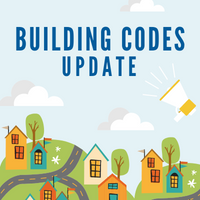 The building code update process in Virginia is underway this year. Workgroups have begun to meet to discuss proposals that have been submitted to DHCD for review. Below are several energy proposals that are currently under consideration by the DHCD energy subgroup committee, on which VAEEC executive director, Chelsea Harnish participates.
The building code update process in Virginia is underway this year. Workgroups have begun to meet to discuss proposals that have been submitted to DHCD for review. Below are several energy proposals that are currently under consideration by the DHCD energy subgroup committee, on which VAEEC executive director, Chelsea Harnish participates.
Note: You will need to register for a free account on the DHCD website to access the links below.
Proposals under consideration that the VAEEC supports:
EC-C407.6-21: Zero energy construction proposal to align all energy conservation codes with the 2021 IECC
REC-R402.1.2(1)-21: strikes VA amendments to fully adopt the 2021 IECC wall insulation requirements; this proposal was submitted by VAEEC member, Eric Lacey, of the Responsible Energy Codes Alliance (RECA). Using the DOE methodology for reviewing code change proposals, RECA determined that this proposal alone would improve efficiency a whopping 13%!
REC-R402.1.2(2)-21: strikes VA amendments to fully adopt the 2021 IECC wall insulation requirements; identical to the proposal above but submitted by a different patron.
REC-R402.4-21: strikes VA amendments to fully adopt the 2021 IECC air leakage requirements
REC-R402.4.1.2-21: requires 3ACH for air leakage but also provides a trade off for builders
REC-R403.3.3-21: updates air duct testing compliance to align with 2021 IECC
Additionally, the subgroup is also considering a proposal on electric vehicles:
REC-R404.2-21: Electric vehicles proposal to align residential energy code with the 2021 IECC
The Energy subgroup has taken positions on the following proposals, which were reviewed by the full working group on April 14th.
EC-C402.4-21: (Consensus) technical amendment to strikes Virginia amendment language currently in the Virginia Construction Code of the USBC that are either outdated or align with the 2021 IECC
EC1301.1.1.1-21: (Non-consensus) strikes Virginia amendments to fully adopt the 2021 IECC
America has a building problem.
Americans spend up to 90% of their lives indoors, in buildings that were not designed with ventilation in mind. The quality of indoor air affects all aspects of life – health, school and job performance, cognitive abilities, and energy bills.
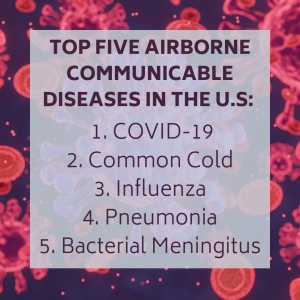 While COVID-19 brought indoor air quality into sharp focus, many of the most common – and often dangerous – communicable illnesses are spread through airborne transmission. Additionally, chronic illnesses like asthma, cardiovascular disease, and COPD are exacerbated by factors in the living environment. Comparative risk studies performed by EPA’s Science Advisory Board (SAB) have consistently ranked indoor air pollution among the top five environmental risks to public health. In fact, there is over thirty years of research on the effects of indoor air quality on human health and behavior.
While COVID-19 brought indoor air quality into sharp focus, many of the most common – and often dangerous – communicable illnesses are spread through airborne transmission. Additionally, chronic illnesses like asthma, cardiovascular disease, and COPD are exacerbated by factors in the living environment. Comparative risk studies performed by EPA’s Science Advisory Board (SAB) have consistently ranked indoor air pollution among the top five environmental risks to public health. In fact, there is over thirty years of research on the effects of indoor air quality on human health and behavior.
Improvements to air filtration and ventilation have lagged behind other building systems for years, leading to what Dr. Vin Gupta, the Chief Health Officer at Amazon, calls “the biggest challenge for public and workspaces of this century.”
“Go back 100 years. The big issue that was killing people were communicable diseases passed fecal to oral,” Gupta said. This issue led to improvements in sanitation and waste disposal across the world. “100 years later, it is how do we ventilate public space and workplaces.”
Building owners and residents need to prioritize improved indoor air quality in their spaces. “Treat indoor air quality like a must-have work benefit, not a trendy perk” said Prof. Joseph Allen, associate professor at the Harvard T.H. Chan School of Public Health. Allen is also leading ongoing research on the correlation between indoor air quality and health.
Allen was a leading author on a recent study that explored the coexistence of energy efficiency and health. The third in a series that focused on the effects of air quality on cognitive function, researchers concluded that cognitive scores averaged between 61-101% higher in green building designs over conventional buildings. The authors stated these findings have “wide-ranging implications” as the study mimicked many typical indoor environments.
Typically, increases in ventilation and filtration result in an increase in energy use, but by leveraging equipment controls and efficient equipment, these programs help building owners and residents keep energy increases manageable.
George Barnes, Account Manager for Complex Solutions for Trane said, “the challenge is to complete [measures] in an energy efficient manner. If done correctly, spaces will be safer, occupants will be healthier, and any cost increases will be mitigated.”
Energy efficiency and green building also reduces absenteeism in schools and the workplace, improves workforce retention and productivity, and contributes to better comfort for residents and workers. As employers bring workers back into physical offices, it is critical that everyone – building owners, CEOs, employees, and more – keep a keen eye on the health of the buildings and the people within them.
 Despite the ongoing challenges due to COVID-19, the Virginia Energy Efficiency Council helped advance the Commonwealth’s energy efficiency programs and policies throughout 2021. We worked to facilitate the deployment of energy-efficient technologies that improve indoor air quality in schools as they prepared to welcome students in person, many for the first time in 18 months. We supported legislation to expand public building performance standards and advocated for an update to the Virginia Energy Conservation & Environmental Standards. We also saw the first C-PACE project in the state become a reality. Additionally, we established a dedicated technology committee to identify innovation and needs.VAEEC staff successfully worked with DHCD to establish a new weatherization deferral and repair program using funds from the Regional Greenhouse Gas Initiative’s carbon auctions. By participating in proceedings before the SCC, we ensured that the energy efficiency goals set forth in the Virginia Clean Economy Act remain achievable.
Despite the ongoing challenges due to COVID-19, the Virginia Energy Efficiency Council helped advance the Commonwealth’s energy efficiency programs and policies throughout 2021. We worked to facilitate the deployment of energy-efficient technologies that improve indoor air quality in schools as they prepared to welcome students in person, many for the first time in 18 months. We supported legislation to expand public building performance standards and advocated for an update to the Virginia Energy Conservation & Environmental Standards. We also saw the first C-PACE project in the state become a reality. Additionally, we established a dedicated technology committee to identify innovation and needs.VAEEC staff successfully worked with DHCD to establish a new weatherization deferral and repair program using funds from the Regional Greenhouse Gas Initiative’s carbon auctions. By participating in proceedings before the SCC, we ensured that the energy efficiency goals set forth in the Virginia Clean Economy Act remain achievable.
Check out our top five achievements in 2021 below. View our 2021 Annual Report to learn more about the organization and our work.
All of this progress was made possible by the support of our members. We are excited to work with you in the new year to create, implement, and share energy efficiency solutions that improve the quality of life throughout the Commonwealth.
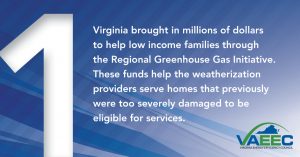
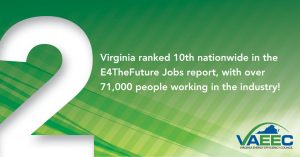
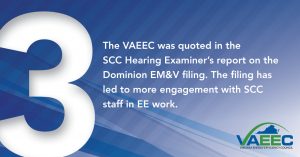
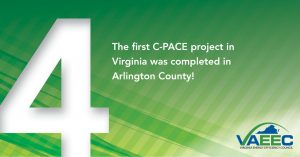
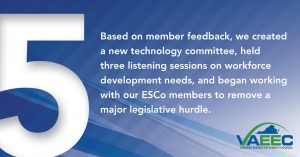
On October 27th, the SCC released the final order for the Dominion Energy EM&V proceeding. For this proceeding, the VAEEC acquired expert witness, Mark James, Senior Research Fellow in the Institute for Energy and the Environment and adjunct professor at Vermont Law School to testify on our behalf. Additionally, staff from the American Council for an Energy-Efficient Economy also provided technical assistance to our legal counsel and expert witness. In their final order, the Commission elected to adopt all of the recommendations in the Hearing Examiner’s report, which was released in July.
Below is a summary of all of the Hearing Examiner’s findings and recommendations to the Commission with additional details on key recommendations. We have listed the page numbers in the report for the discussion on each recommendation so the reader can easily dive deeper into any recommendation of interest.
- The focus of this proceeding is on adopting a more rigorous and accurate EM&V, and not on whether the Company’s current EM&V meets industry standards (p 44-50); VAEEC maintained “nationally-recognized TRMs that follow industry best practices, along with new commitments on EM&V that the Company is making in its post-hearing brief, can and will provide the accuracy that the Commission rightly demand”;
- The Commission should direct Staff to participate in the stakeholder process as a stakeholder to work with the Company and others to develop more rigorous and accurate EM&V data (p 50-53); James said, “With the newly established EM&V subgroup, the stakeholder process offers the opportunity for transparent presentation and discussion of options outside of a Commission proceeding. The recommendations generated by the EM&V subgroup would still be subject to Commission approval, but the products of the stakeholder group would be created through a transparent, collaborative, and consensus-driven process. Furthermore, using the stakeholder group allows for greater participation from interested parties and energy efficiency experts.” While SCC staff was concerned that participation would undermine their credibility, the Commission stated that they speak only through their Orders, not through Staff.
- The Commission should adopt the dashboard proposed by Company witness Frost in his rebuttal testimony (p 53-55), and attached to this Report as Attachment 1 (p 78); “The Company’s proposed dashboard represents an executive summary of high-level metrics that is easy to read and understood
at a glance. It focuses on spending, savings, metrics noted in the VCEA (such as carbon emission reductions and bill savings), and progress towards the GTSA and VCEA targets.”
- The Commission should adopt the reporting requirements committed to by Dominion Energy as further outlined in the Discussion (p 55-57); Adoption by the Commission should provide all interested parties clarity concerning the information to be provided by the Company and when that information will be provided. The provisions for using formats proposed by VAEEC witness James (or formats substantially similar) provides some flexibility as to the final format for these filings. Going forward changes in format or in the information provided can be addressed in future DSM proceedings.
- The Commission should direct Dominion Energy to file the May EM&V Report in the Company’s December DSM filings (p 57-58); If the entire EM&V Report from May were also filed at the beginning of the new DSM proceeding, at the time of filing, it would represent the most current EM&V Report.
- Deemed input values meet the measured and verified standard for determining compliance with the energy-saving requirements of the VCEA (p 58-62); VAEEC argued that, because it is impossible to measure electricity not consumed, all EM&V methods rely on extrapolations and have some margin of error and uncertainty. Indeed, VAEEC maintained “the use of Virginia-specific inputs as recommended by Staff might prove to be less accurate than results based on deemed values.” VAEEC extended this to utility-specific data that may be less accurate and reliable than deemed values based on limitations of the utility-specific sample as compared to deemed values based on larger populations over longer periods of time. VAEEC recommended the Commission adopt the Company’s updated EM&V approach
as it is more rigorous and accurate than what was reviewed in 2019.
- To increase the rigor and accuracy of the EM&V process, the Commission should adopt a combination of the Company’s proposed framework and the Staff’s proposed hierarchical framework, with both frameworks as further modified herein (p 62-73);
- The Commission should direct the Company to document the baselines used during program design and all subsequent adjustments or changes to the baselines, and provide the documentation to Staff and the other parties upon request (p 73-75);
- The Commission should direct the Company to increase the coordination between DNV and the program designer(s) consistent with their commitment in this proceeding (p 75); and
- The Commission should direct the Company to undertake at least one baseline study based on Staff’s input. In the final order, the Commission required Dominion to select two programs to use in baseline studies to establish their own baselines for energy savings. The Company has ninety days from the final order to present this information to the SCC.
Virginia’s energy efficiency community came together on November 15th and 16th for the VAEEC’s 2021 Energy Efficiency Forum. A big thank you to our sponsors, speakers, awards winners, and attendees for making this event a great success!
Day one primarily consisted of breakout sessions on timely, educational topics. Due to COVID-19 and an effort to make the event accessible to those near and far, this portion of the event was offered over a virtual platform.
Getting Smarter with Energy Efficiency Technology: Smart technologies have advanced by leaps and bounds. This panel explored how these technologies work together to make communities cleaner, safer, and closer – while increasing energy efficiency. The session was sponsored by Virginia Natural Gas. Speakers included Keven Brough (Google), Phil Markham (Southern Company), and Damian Pitt (Virginia Commonwealth University), and KC Bleile (Viridiant, VAEEC Board) moderated.
Opportunities & Insights for Energy Performance Contracting: This panel discussed the ways Energy Performance Contracts, or EPCs, can address post-COVID needs, case studies, potential legislative solutions for ongoing challenges, and a look at what comes next. The panel was moderated by Chrissy Sherriff (ABM Industries), and speakers included Marc Lipschultz (VA Dept. of Transportation), Nam Nguyen (Virginia Energy), and Barry Wilhelm (Schneider Electric).
Advancing Virginia’s Energy Efficiency Workforce: As the energy efficiency industry grows year by year, there is a demonstrated need for a trained workforce to fill those jobs. This panel discussed the opportunities and challenges in meeting those needs and highlighted the federal, state, and local programs working to fill the gaps. The session proved to be quite timely as states are beginning to receive massive amounts of federal relief funding through the American Rescue Plan Act. Speakers included Brandi Frazier Bestpitch (Virginia Energy), Matt Kellam (Dominion Energy, Virginia Energy Workforce Consortium), and Kim Strahm (Community Housing Partners), and Carrie Webster (Henrico County) moderated.
Improving Building Performance Across Sectors: According to the US Department of Energy, over 70% of carbon emissions come from commercial and residential buildings across the US. This panel discusses how energy efficiency can not only address existing building stock, but move the industry into the future. This session was sponsored by VEIC. Speakers included David Nemtzow (Dept. of Energy Building Technologies Office), Christian Placencia (DC Sustainable Energy Utility), and Jennifer Rosenthal (TRC Companies) and was moderated by Liz Beardsley (US Green Building Council, VAEEC Board).
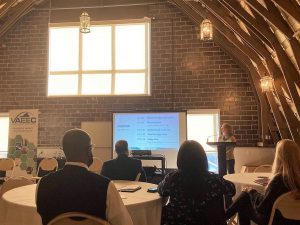 Attendees gathered in person for day two, which took place at the Dorey Recreation Center in Henrico County. The second day began with an opening presentation from Executive Director, Chelsea Harnish. Attendees were updated on the industry’s accomplishments and updates over the past two years.
Attendees gathered in person for day two, which took place at the Dorey Recreation Center in Henrico County. The second day began with an opening presentation from Executive Director, Chelsea Harnish. Attendees were updated on the industry’s accomplishments and updates over the past two years.
The plenary session, Supporting Diversity, Equity, and Inclusion in the Energy Efficiency Sector, was next. Energy efficiency growth is a tale told in numbers – dollars saved, households served, jobs provided. However, when it comes to business and hiring needs, 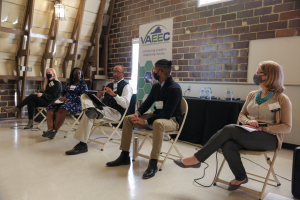 the numbers don’t tell the whole story. Panelists discussed the importance of diversity, equity, and inclusion (DEI) in the energy efficiency industry and how it will help advance our aligned values. Speakers included Willie Fobbs (Dept. of Housing & Community Development), Esi Langston (City of Norfolk), Leigh Anne Ratliff (Trane Technologies, VAEEC Board), and Harrison Wallace (Climate & Equity Foundation). Chelsea Harnish (VAEEC) moderated.
the numbers don’t tell the whole story. Panelists discussed the importance of diversity, equity, and inclusion (DEI) in the energy efficiency industry and how it will help advance our aligned values. Speakers included Willie Fobbs (Dept. of Housing & Community Development), Esi Langston (City of Norfolk), Leigh Anne Ratliff (Trane Technologies, VAEEC Board), and Harrison Wallace (Climate & Equity Foundation). Chelsea Harnish (VAEEC) moderated.
Three Virginia-based projects were recognized next during our sixth annual Virginia Energy Efficiency Leadership Awards ceremony. Projects were placed within one of three categories based on the sector served: Academic, Commercial, and Government. For information on each winning project, visit our 2021 Awards page.
Finally, after two years of only being able to gather virtually, the event ended with an in-person happy hour at Triple Crossing – Fulton in Richmond. We’ve heard loud and clear that networking is one of the biggest benefits of a VAEEC membership, so we were excited to be able to safely offer this in-person opportunity. It was a pleasure to connect with many of our members face-to-face again.
Thank you to our sponsors, speakers, awards winners, and event attendees for making this one of our best events to date. Click here to view photos of the event. Additional event information, including speaker biographies and sponsor features, can be found in the event program.
Event attendees received recordings for each of the four, virtual breakout sessions in the post-event email. Presentation PDFs can be viewed at the links above.
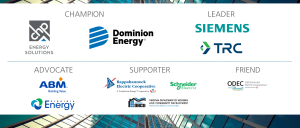
It’s no secret that technology has changed many aspects of the energy efficiency industry. From building automation systems to LED lighting, there have been many strides in improving the energy use of the inside of a building. But what about the structure itself? The thermal envelope, and the materials used to construct it, account for a large portion of a building’s energy use, contributing to an estimated $372 billion in heating and cooling costs each year.
On September 21st, we held a panel with companies who have created innovative materials that are helping address these issues while improving building efficiency, providing resident comfort, and reducing energy costs.
First, we heard from Mike Lyon with Aerobarrier, which is an inert sealant based on permeable waterborne acrylic. The product is aerosolized in a pressurized space and monitored continuously with proprietary software to achieve maximum efficiency. Originally invented in 1993, the Aeroseal and Aerobarrier products have sealed over 100,000 homes to improve their efficiency, indoor air quality, and comfort. Aerobarrier was able to scale this technology nationwide by using a franchised certified dealer network, which allows the corporate home base to keep advancing both the sealant and the software. “This partnership model allowed us to scale up very quickly, reaching 40 states and Canada in the last five years,” said Lyon.
Next, we heard from Dr. Aashay Arora, a co-founder of Enkoat, which addresses insulation needs from a different perspective. This Arizona based startup, backed by the National Science Foundation, has developed a thermal coating that can be applied like a traditional construction paint to plaster, stucco, and wall panels. Founded by Dr. Arora and Dr. Matthew Aguayo in 2018, Enkoat focuses on developing sustainable solutions for the construction industry. By using their Active Insulation technology, pilot homes were able to reduce their energy use by 30% over a year. Dr. Arora notes that, while the building industry is very conservative, they are “moving slowly towards materials that are carbon neutral, sustainable, and have longer life.”
Finally, we heard from Zack Mannheimer with Alquist 3D, which works to address the housing shortage across rural and suburban America by creating affordable 3D printed concrete homes, including two homes in collaboration with Virginia Tech located in Williamsburg and the greater Richmond area. With the compound problems of COVID-19, skyrocketing materials costs, and rapidly inflating housing prices, more than 30 million people are expected to move away from major cities by 2023 – and they’re going to need somewhere to live. By reducing the upfront costs of building, and carefully controlling the materials needed to produce a home, Alquist 3D is able to address these needs. They are also working with One Vision Holdings to move toward hemp-based concrete and insulation, reducing the carbon impacts of concrete.
To learn more about these technologies, watch the recording of our recent webinar, Innovating the Building Envelope.
Benchmarking has been gaining a lot of attention across the Commonwealth, but it is not a new concept. At its core, benchmarking is the practice of measuring a building’s energy usage and comparing it to the average of similar buildings. It provides building owners with the ability to understand their relative energy performance and identify opportunities to reduce energy waste. According to the U.S. Energy Information Administration, in 2018, buildings accounted for 39% of total U.S. energy consumption.
 2020 legislation mandated the benchmarking of Virginia’s public buildings, which is no small task. There are 10,888 buildings with 117 million square feet of space in the state’s building asset portfolio. In an effort to “lead by example”, the state energy office has developed an energy data warehouse to track and manage this building data. Using energy management dashboards, they are able to highlight energy conservation champions and benchmarking best practices. By pin-pointing areas needing efficiency measures, staff is able to offer support to get innovative technologies implemented, which then help the Commonwealth achieve its energy efficiency goals. Additionally, the state energy office is willing to help interested localities by sharing their energy tracking software.
2020 legislation mandated the benchmarking of Virginia’s public buildings, which is no small task. There are 10,888 buildings with 117 million square feet of space in the state’s building asset portfolio. In an effort to “lead by example”, the state energy office has developed an energy data warehouse to track and manage this building data. Using energy management dashboards, they are able to highlight energy conservation champions and benchmarking best practices. By pin-pointing areas needing efficiency measures, staff is able to offer support to get innovative technologies implemented, which then help the Commonwealth achieve its energy efficiency goals. Additionally, the state energy office is willing to help interested localities by sharing their energy tracking software.
Individual localities have also taken steps to benchmark buildings. Back in 2010-2011, Arlington County instituted the Arlington Green Games, a friendly competition for commercial office buildings to boost energy- and water-savings, waste reduction and recycling, and transportation demand management. This voluntary program had over 100 commercial tenants participating. Scorecards kept track of actions taken, and property managers benchmarked buildings for energy and water usage. After just one year of the competition, the County saw an estimated $2 million in energy and water savings. The County gleaned some important takeaways about voluntary benchmarking from this program.
- Commercial property owners/managers were eager to participate when prizes were awarded and if they could show off their energy-efficient properties
- However, this effort did not achieve market transformation
- Property owners/managers admitted to not including their energy-intensive buildings. This demonstrates the appeal of benchmarking mandates as a public policy tool in order to achieve lasting change through energy-efficient climate action
- It was also labor-intensive to achieve high engagement rates with property owners
Several Virginia localities are already benchmarking their government facilities, including Fairfax County. The live results are publicly available in the County’s energy dashboard. Benchmarking has provided several tangible benefits:
- Internal tracking and recordkeeping, trend analysis, etc.
- Ability to identify opportunities for improvements and to measure and verify savings
- Leading by example
- Provides the platform for long-term awareness, internal and public accountability, and actionability
 Beyond Virginia, cities and counties across the country mandate benchmarking for commercial and public buildings. Just to our north, the District of Columbia passed legislation in 2008 requiring all private buildings greater than 50k square feet and all public buildings greater than 10k square feet to report their annual energy and water use. This program is run through the D.C. Dept. of Energy & Environment (DOEE) in partnership with the D.C. Sustainable Energy Utility (DCSEU). All data is reported through the U.S. Environmental Protection Agency’s free ENERGY STAR Portfolio Manager. DOEE also uses the Standard Energy Efficiency Data (SEED) Program to centralize energy benchmarking data. SEED allows the DOEE to track compliance, enforcement, and communications with building owners and managers.
Beyond Virginia, cities and counties across the country mandate benchmarking for commercial and public buildings. Just to our north, the District of Columbia passed legislation in 2008 requiring all private buildings greater than 50k square feet and all public buildings greater than 10k square feet to report their annual energy and water use. This program is run through the D.C. Dept. of Energy & Environment (DOEE) in partnership with the D.C. Sustainable Energy Utility (DCSEU). All data is reported through the U.S. Environmental Protection Agency’s free ENERGY STAR Portfolio Manager. DOEE also uses the Standard Energy Efficiency Data (SEED) Program to centralize energy benchmarking data. SEED allows the DOEE to track compliance, enforcement, and communications with building owners and managers.
Additional legislation passed reduces the size threshold of the building required to submit annual benchmarking reports. In 2022, buildings greater than 25k square feet will be required to report, and in 2025, buildings greater than 10k square feet will be required. This legislation also established a third-party verification requirement for all covered buildings every three years.
Throughout this process, DOEE and DCSEU have pinpointed several best practices for benchmarking commercial buildings.
- Data quality emails
- Automation
- Trainings/webinars
- Enforcement
- Customer service
Additionally, there have been several challenges faced along the way.
- Staffing (at the start of the program)
- Outreach and engagement
- Reliable data sources
- Access to tools
- Lack of benchmarking knowledge/ no national standard process
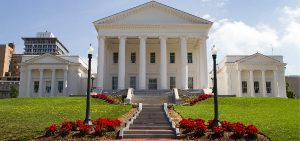 The Virginia Energy Efficiency Council is working with Del. Rip Sullivan on commercial benchmarking legislation for the 2022 General Assembly session. The legislation will allow localities to mandate commercial benchmarking programs within their jurisdiction. We hope to set up the legislation in a way that is beneficial to localities. Therefore, we are facilitating conversations with our local government members who are interested in this topic. We have also met with several benchmarking experts to glean their best practices. Stay tuned for more information, or contact Jessica Greene if you have any questions.
The Virginia Energy Efficiency Council is working with Del. Rip Sullivan on commercial benchmarking legislation for the 2022 General Assembly session. The legislation will allow localities to mandate commercial benchmarking programs within their jurisdiction. We hope to set up the legislation in a way that is beneficial to localities. Therefore, we are facilitating conversations with our local government members who are interested in this topic. We have also met with several benchmarking experts to glean their best practices. Stay tuned for more information, or contact Jessica Greene if you have any questions.
To learn more about benchmarking and any of the programs mentioned above, check out the VAEEC’s Benchmarking Best Practices webinar held in June 2021.
The Dominion Energy proceeding on Evaluation, Measurement, and Verification (EM&V) before the SCC will be held next week. The VAEEC is formally participating in this hearing in support of EM&V measures that will help ensure the energy efficiency goals of the Virginia Clean Economy Act (VCEA) are met. EM&V is a critical first step in quantifying the value of energy efficiency programs, which allows demand-side management resources, like energy efficiency, to compete with supply-side resources, such as a natural gas plant, in meeting future energy needs in a cleaner, healthier way.
The inherent challenge of evaluating energy efficiency programs is that there is no simple “meter” to record kilowatt-hours saved. As a result, a baseline needs to be established to identify what would happen in that program’s absence. However, there must be a balance between the cost of evaluation and the benefits of obtaining more precise data, as the pursuit of precision can siphon funds from the actual implementation of that energy efficiency program without adding significant benefit. To accomplish that balance, most utilities use deemed savings, or reasonable and unbiased estimates of energy and cost savings based on standard industry methods.
During their pre-filed testimony, the SCC staff questioned the use of deemed savings and non-Virginia data and recommended establishing customized baselines for each individual program currently underway, despite this being against industry best practices. The VAEEC has serious concerns about this recommendation. Every dollar spent on EM&V is a dollar that cannot be spent on providing actual program services to customers. A requirement to use only Virginia-specific data or a rejection of deemed savings estimates can drive up EM&V costs without always providing improvement in EM&V data.
We have several recommendations that would ensure the best use of program dollars without unnecessary spending on duplicate data gathering.
- Join the Mid-Atlantic Technical Resource Manual (TRM): A TRM provides the value of previous evaluation efforts while maintaining the flexibility to adapt to local- or utility-specific conditions such as lifespan estimates for specific measures, operating hours, baseline conditions, and local climatic conditions. When performing EM&V on their programs, Dominion already defers first to the Mid-Atlantic TRM, then factors in Virginia-specific data when appropriate. Formally joining the Mid-Atlantic TRM would provide uniformity in evaluation across all Virginia utilities and would further increase transparency into the process itself.
- Allow Flexible, Portfolio-Level EM&V Spending: The Commission should set spending caps at the portfolio level to allow for greater flexibility and additional energy-saving benefits. After reviewing EM&V data, a utility should be able to shift funds between programs (e.g., 10 percent to 15 percent) without having to seek additional approval. Removing these caps would permit greater flexibility, which can ultimately boost the energy savings generated from the portfolio without imposing additional costs on customers.
- Stakeholder Input: Allow the stakeholder group to assist in developing consensus for EM&V methods. With the newly established EM&V subgroup, an opportunity is provided to present and discuss options for EM&V methods and protocols outside of a Commission proceeding. By using the Mid-Atlantic TRM for this purpose, the stakeholder group would avoid the unnecessarily burdensome process of developing and approving the specifics of every measure-specific or program-specific baseline. The recommendations generated by the EM&V subgroup would still be subject to Commission approval, but the products of the stakeholder group would be created through a transparent, collaborative, and consensus-driven process.
- Dashboard: We support the requirement of both a quarterly “dashboard” and “annual summary”. A dashboard should provide a program-by-program snapshot of key activities, such as participation numbers and program spending, in order to track how the company’s energy efficiency portfolio is progressing throughout the year. The annual summary would contain audited and finalized savings for the company’s DSM programs to ensure compliance with the GTSA and the VCEA.
If you want to dive into this a little more, you can read our expert witness’ pre-filed testimony here.
Virginia’s energy efficiency industry virtually gathered together to learn and connect at the VAEEC’s Spring 2021 Forum. Over 100 energy efficiency professionals participated in the event, which included three educational sessions, dedicated networking sessions, and our annual member meeting with Board elections. Attendees were treated to timely topics, including energy management systems, Virginia’s Regional Greenhouse Gas Initiative (RGGI) auctions and Housing Innovations in Energy Efficiency program, and how the industry is still coping with the impacts of a global pandemic. We want to extend a huge thank you to our sponsors and speakers for their support, and to everyone who attended.
The event kicked off with our annual member meeting. This is a dedicated time where not only do we get to share VAEEC’s updates and accomplishments, but it’s a time for members to share their successes. Many of the organizational highlights can be found in our 2020 annual report, and our 2020 accomplishments blog post and video. Additionally, Board Chair John Morrill (Fairfax County) led our 2021 Board of Directors election. VAEEC members re-elected Michael Hubbard (Dominion Energy), David Koogler (Rappahannock Electric Cooperative), and John Morrill (Fairfax County). We also welcomed Tim Bernadowski (Siemens Industry) who took over Rick Counihan’s (Nest) seat, Carla Dix (Columbia Gas) who took over Susan Larsen’s (Columbia Gas) seat, and Carrie Webster (Henrico County) who took over Tom Nicholas’s (City of Virginia Beach) seat. We are excited to add these new voices to our leadership.
VAEEC’s biannual forums are known for their ability to bring together Virginia’s energy efficiency leaders to make valuable connections. Even with this year’s Spring Forum being virtual, we wanted to continue to provide this opportunity. Our virtual networking session allowed participants to join breakout rooms based on different topics: Building Codes & Performance, Innovation & Technology, Legislation & Policy, and Local Government Collaboration. Lively conversations arose and beneficial connections were made. Thank you Virginia Energy Sense for sponsoring this popular session.
Next, participants were able to attend one of three concurrent sessions: Using Energy Management Systems for Whole Building Efficiency, Making a Difference in Low-Income Housing: How the RGGI Auctions Affect EE Work, and Pandemic Problem Solving: Facing Energy Challenges Across Sectors. Click on a session title below to view the corresponding presentation. All attendees will receive an audio recording of each session.
Using Energy Management Systems for Whole Building Efficiency, moderated by Dawn Oleksy (City of Richmond), discussed the biggest challenges and opportunities with the installation, operation, and maintenance of energy management systems and the strategies for overcoming those obstacles. Panelists shared new trends and the future of energy management systems, including grid-interactive buildings. Speakers included Tim Bernadowski (Siemens Industry, VAEEC Board member), Lee Dunfee (Cushman & Wakefield), and Christopher Perry (ACEEE). This session was sponsored by the Virginia Department of Housing & Community Development.
Be careful of misinterpreting ASHRAE guidelines to mean you should simply bring a lot of outdoor air into your building, Tim Bernadowski of Siemens Industry says on our Whole Building Efficiency panel. More accurate: “Make sure you’ve got the correct outdoor air for your design.”
The Virginia RGGI auctions provide enormous potential to improve the Commonwealth’s low-income housing stock. During the session, Making a Difference in Low-Income Housing: How the RGGI Auctions Affect EE Work, panelists provided insights on program management, development, and the weatherization assistance and Affordable & Special Needs Housing programs. Speakers included Dan Farrell (Virginia Dept. of Housing & Community Development), Sunshine Mathon (Piedmont Housing Alliance), and Kerri Walker (Project:HOMES) and Lesley Fore (Community Housing Partners) moderated. The session was sponsored by the Piedmont Housing Alliance.
The COVID-19 pandemic has had wide-reaching effects on all sectors of the energy efficiency industry. During Pandemic Problem Solving: Facing Energy Challenges Across Sectors, panelists discussed the challenges and opportunities faced over the past year, and what they anticipate going forward. Speakers included Benjamin Knopp (Think Little), Cathy Lin (Arlington Public Schools), and Aaron Schneider (Metrus Energy), and Legih Anne Ratliff (CPower Energy Management) was the moderator. This session was sponsored by VEIC.
“There’s more money than ever for green projects,” says Aaron Schneider of Metrus Energy — from the government, asset managers and capital markets. It’s a “massive shift.”
As with all of our work, this event would not have been possible without the continued support of our members and sponsors. Thank you to everyone who participated in this year’s Spring Forum for helping us push energy efficiency toward an even brighter future.
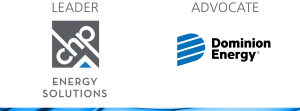
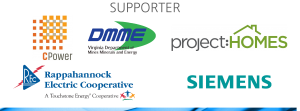
We strive to make each event better than the last. To achieve this goal, we rely on feedback from our event attendees. Please take a moment to share your thoughts and suggestions with us in this brief survey.
Save the date. Our Fall 2021 Forum will be held in Richmond on November 16th. The event will feature the Virginia Energy Efficiency Leadership Awards Ceremony and an industry Trade Show. We hope to see you there!
 The VAEEC recently hosted a webinar on building performance primarily for local governments across the Commonwealth. Leading By Example Through Building Performance followed three different building performance policies and programs to not only encourage the audience to implement their own strong green building policy but to also provide best practices and lessons learned from the design phase all through the day-to-day management of a program.
The VAEEC recently hosted a webinar on building performance primarily for local governments across the Commonwealth. Leading By Example Through Building Performance followed three different building performance policies and programs to not only encourage the audience to implement their own strong green building policy but to also provide best practices and lessons learned from the design phase all through the day-to-day management of a program.
 The building code update process in Virginia is underway this year. Workgroups have begun to meet to discuss proposals that have been submitted to DHCD for review. Below are several energy proposals that are currently under consideration by the DHCD energy subgroup committee, on which VAEEC executive director, Chelsea Harnish participates.
The building code update process in Virginia is underway this year. Workgroups have begun to meet to discuss proposals that have been submitted to DHCD for review. Below are several energy proposals that are currently under consideration by the DHCD energy subgroup committee, on which VAEEC executive director, Chelsea Harnish participates.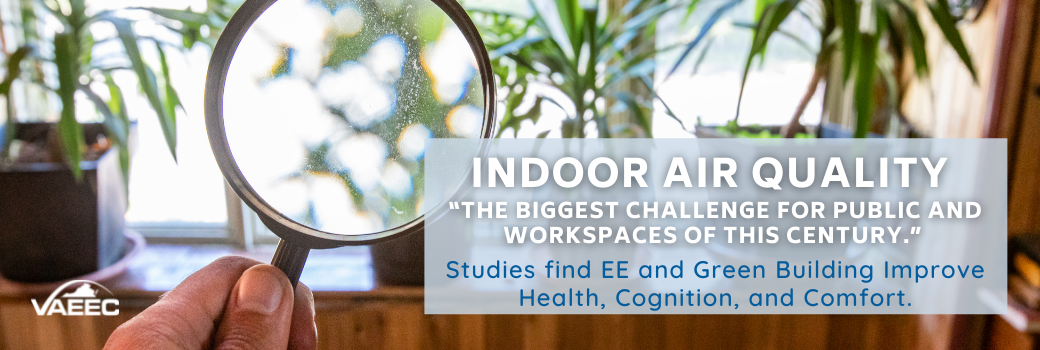

 Despite the ongoing challenges due to COVID-19, the Virginia Energy Efficiency Council
Despite the ongoing challenges due to COVID-19, the Virginia Energy Efficiency Council 




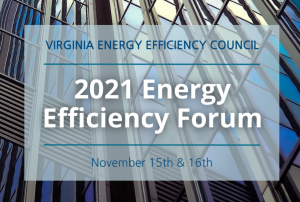
 Attendees gathered in person for day two, which took place at the Dorey Recreation Center in Henrico County. The second day began with an opening presentation from Executive Director, Chelsea Harnish. Attendees were updated on the industry’s accomplishments and updates over the past two years.
Attendees gathered in person for day two, which took place at the Dorey Recreation Center in Henrico County. The second day began with an opening presentation from Executive Director, Chelsea Harnish. Attendees were updated on the industry’s accomplishments and updates over the past two years.  the numbers don’t tell the whole story. Panelists discussed the importance of diversity, equity, and inclusion (DEI) in the energy efficiency industry and how it will help advance our aligned values. Speakers included Willie Fobbs (Dept. of Housing & Community Development), Esi Langston (City of Norfolk), Leigh Anne Ratliff (Trane Technologies, VAEEC Board), and Harrison Wallace (Climate & Equity Foundation). Chelsea Harnish (VAEEC) moderated.
the numbers don’t tell the whole story. Panelists discussed the importance of diversity, equity, and inclusion (DEI) in the energy efficiency industry and how it will help advance our aligned values. Speakers included Willie Fobbs (Dept. of Housing & Community Development), Esi Langston (City of Norfolk), Leigh Anne Ratliff (Trane Technologies, VAEEC Board), and Harrison Wallace (Climate & Equity Foundation). Chelsea Harnish (VAEEC) moderated.
 2020 legislation mandated the benchmarking of Virginia’s public buildings, which is no small task. There are 10,888 buildings with 117 million square feet of space in the state’s building asset portfolio. In an effort to “lead by example”, the state energy office has developed an energy data warehouse to track and manage this building data. Using energy management dashboards, they are able to highlight energy conservation champions and benchmarking best practices. By pin-pointing areas needing efficiency measures, staff is able to offer support to get innovative technologies implemented, which then help the Commonwealth achieve its energy efficiency goals. Additionally, the state energy office is willing to help interested localities by sharing their energy tracking software.
2020 legislation mandated the benchmarking of Virginia’s public buildings, which is no small task. There are 10,888 buildings with 117 million square feet of space in the state’s building asset portfolio. In an effort to “lead by example”, the state energy office has developed an energy data warehouse to track and manage this building data. Using energy management dashboards, they are able to highlight energy conservation champions and benchmarking best practices. By pin-pointing areas needing efficiency measures, staff is able to offer support to get innovative technologies implemented, which then help the Commonwealth achieve its energy efficiency goals. Additionally, the state energy office is willing to help interested localities by sharing their energy tracking software.  Beyond Virginia, cities and counties across the country mandate benchmarking for commercial and public buildings. Just to our north, the District of Columbia passed legislation in 2008 requiring all private buildings greater than 50k square feet and all public buildings greater than 10k square feet to report their annual energy and water use. This program is run through the D.C. Dept. of Energy & Environment (DOEE) in partnership with the D.C. Sustainable Energy Utility (DCSEU). All data is reported through the U.S. Environmental Protection Agency’s free ENERGY STAR Portfolio Manager. DOEE also uses the Standard Energy Efficiency Data (SEED) Program to centralize energy benchmarking data. SEED allows the DOEE to track compliance, enforcement, and communications with building owners and managers.
Beyond Virginia, cities and counties across the country mandate benchmarking for commercial and public buildings. Just to our north, the District of Columbia passed legislation in 2008 requiring all private buildings greater than 50k square feet and all public buildings greater than 10k square feet to report their annual energy and water use. This program is run through the D.C. Dept. of Energy & Environment (DOEE) in partnership with the D.C. Sustainable Energy Utility (DCSEU). All data is reported through the U.S. Environmental Protection Agency’s free ENERGY STAR Portfolio Manager. DOEE also uses the Standard Energy Efficiency Data (SEED) Program to centralize energy benchmarking data. SEED allows the DOEE to track compliance, enforcement, and communications with building owners and managers.  The Virginia Energy Efficiency Council is working with Del. Rip Sullivan on commercial benchmarking legislation for the 2022 General Assembly session. The legislation will allow localities to mandate commercial benchmarking programs within their jurisdiction. We hope to set up the legislation in a way that is beneficial to localities. Therefore, we are facilitating conversations with our local government members who are interested in this topic. We have also met with several benchmarking experts to glean their best practices. Stay tuned for more information, or contact
The Virginia Energy Efficiency Council is working with Del. Rip Sullivan on commercial benchmarking legislation for the 2022 General Assembly session. The legislation will allow localities to mandate commercial benchmarking programs within their jurisdiction. We hope to set up the legislation in a way that is beneficial to localities. Therefore, we are facilitating conversations with our local government members who are interested in this topic. We have also met with several benchmarking experts to glean their best practices. Stay tuned for more information, or contact 